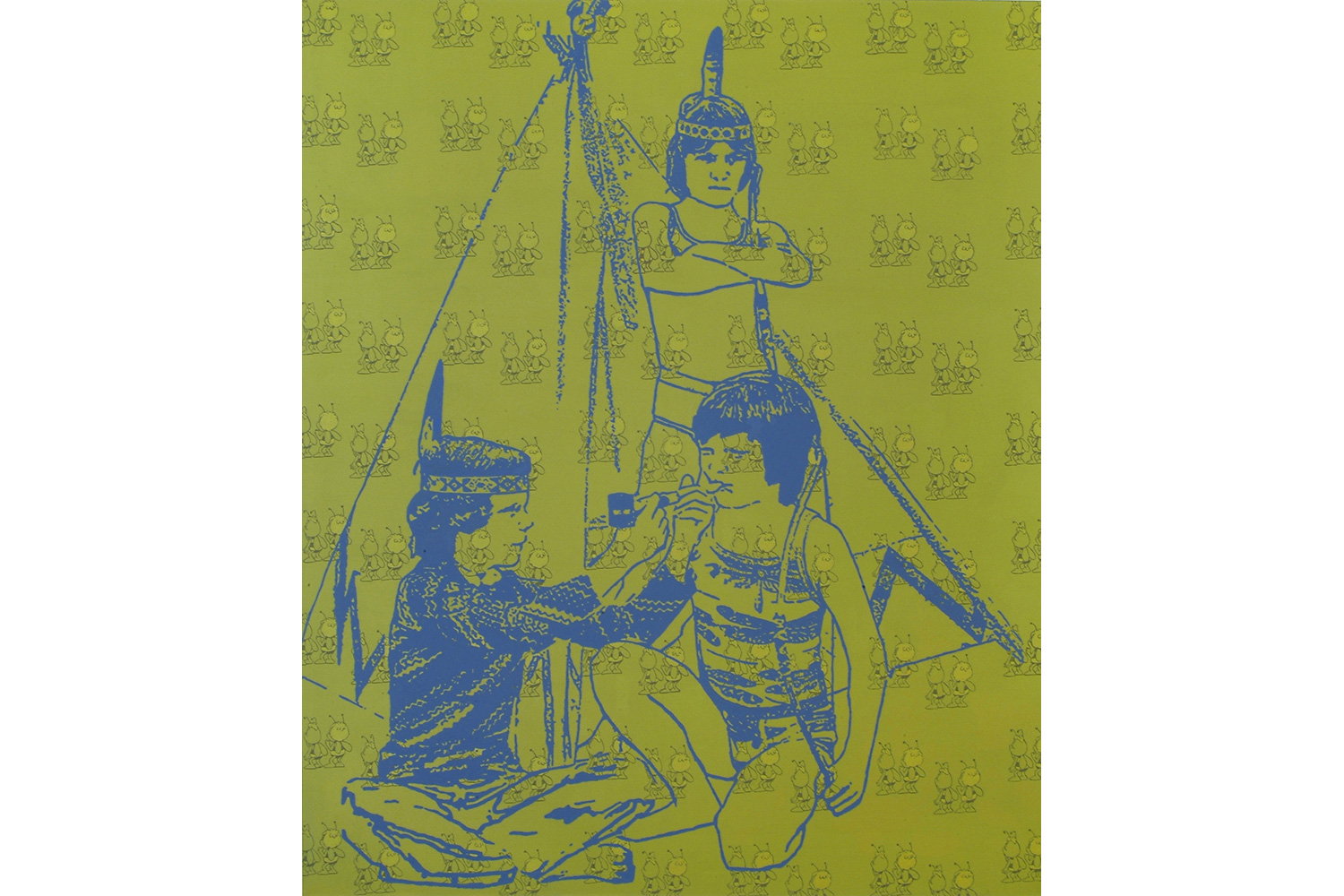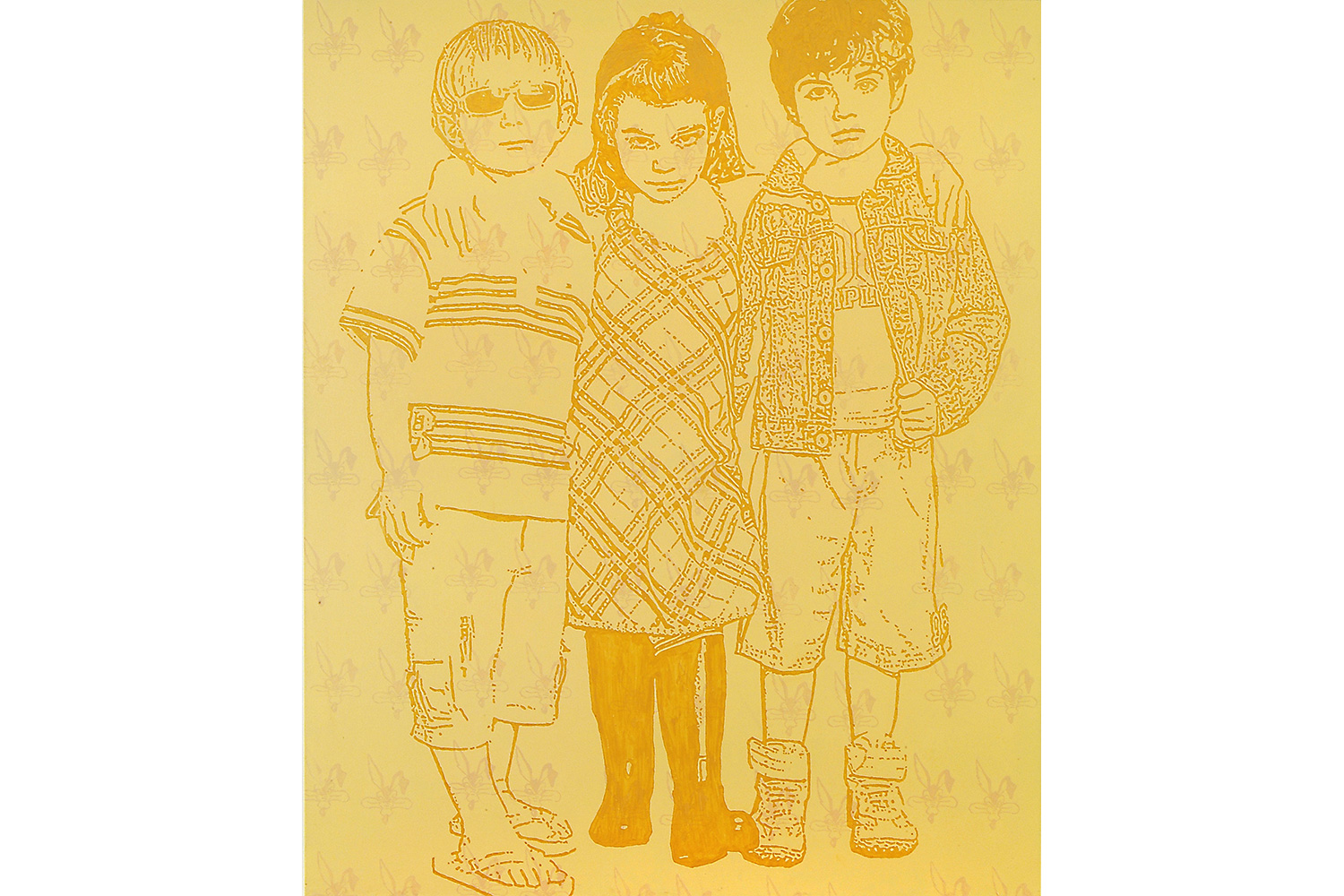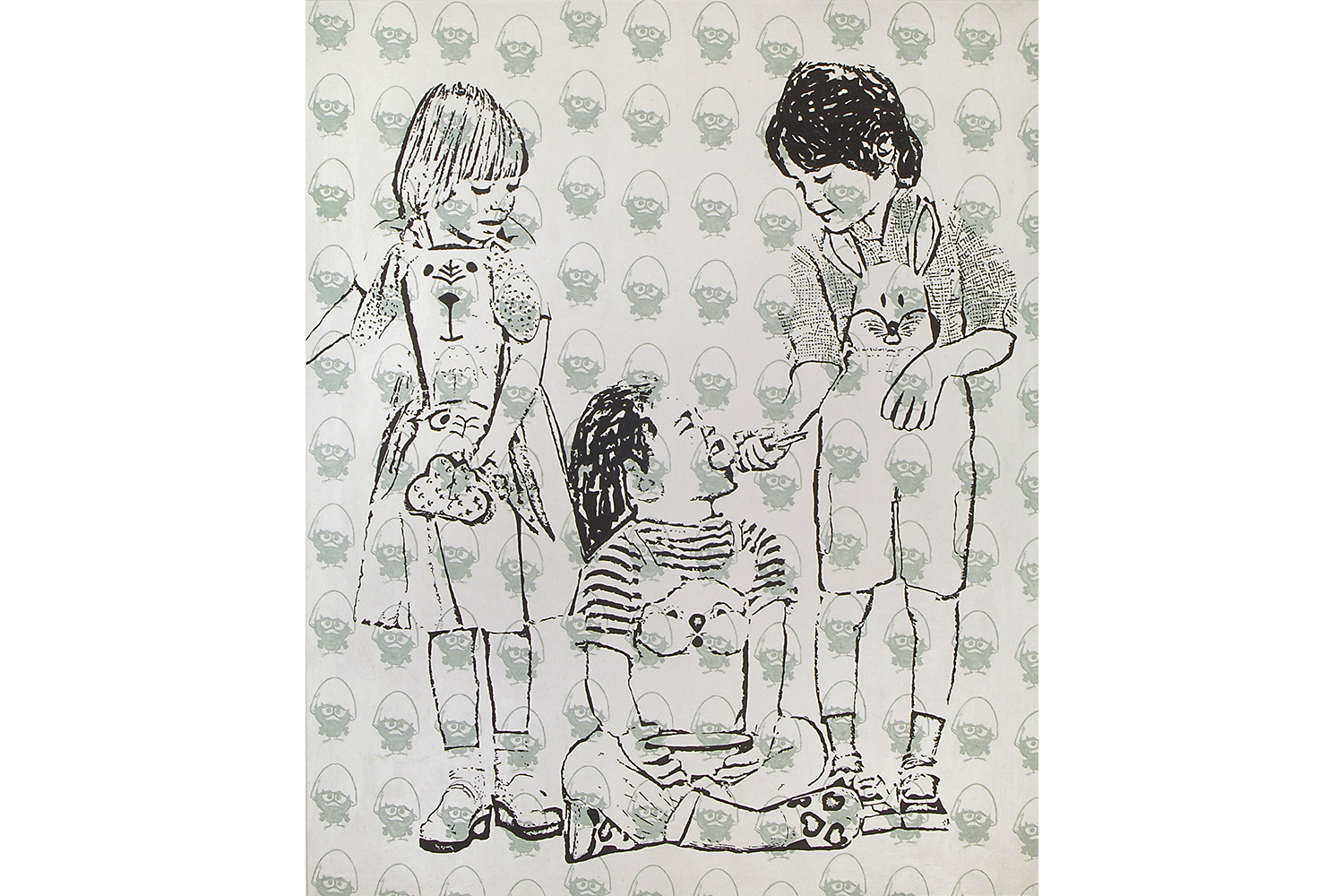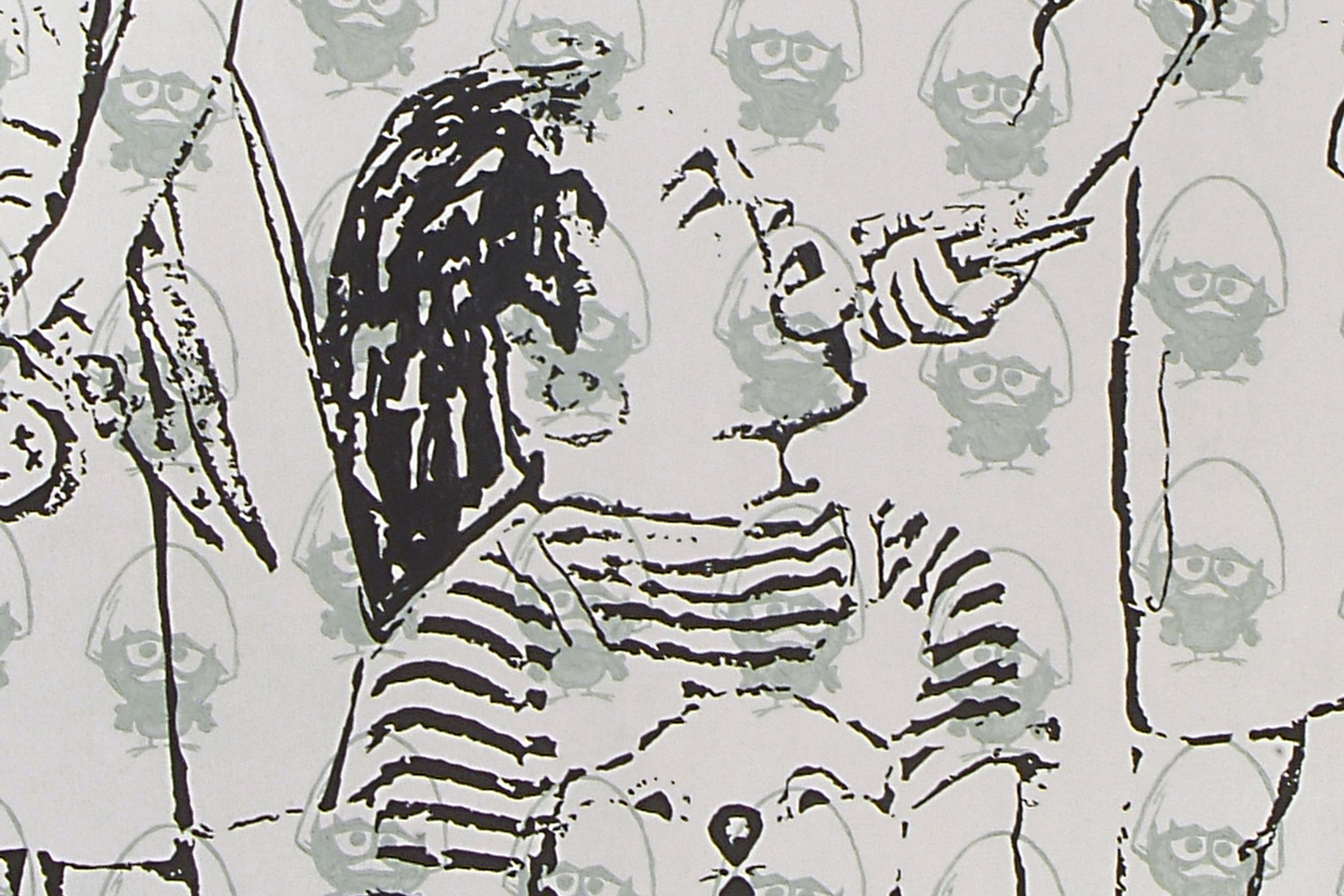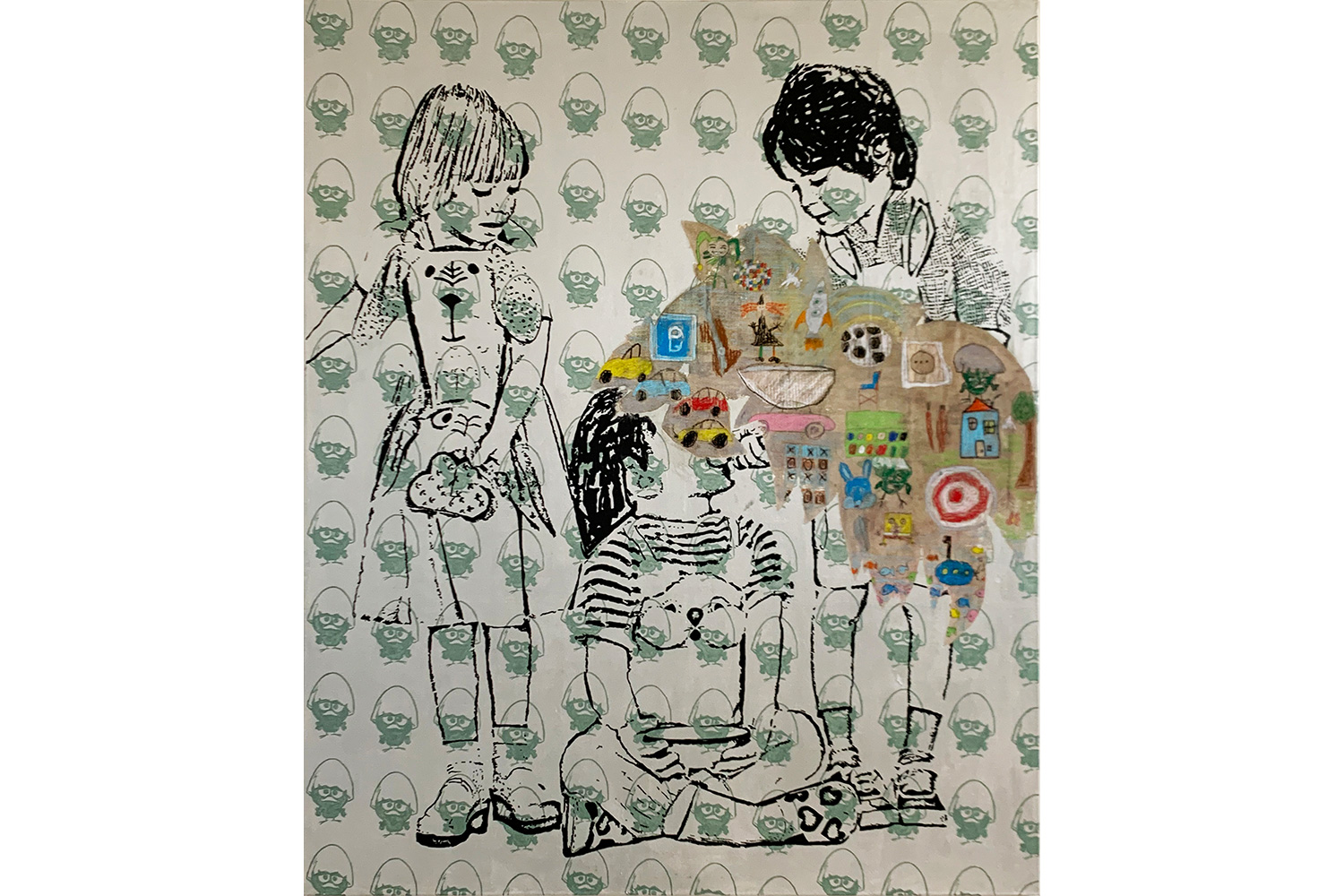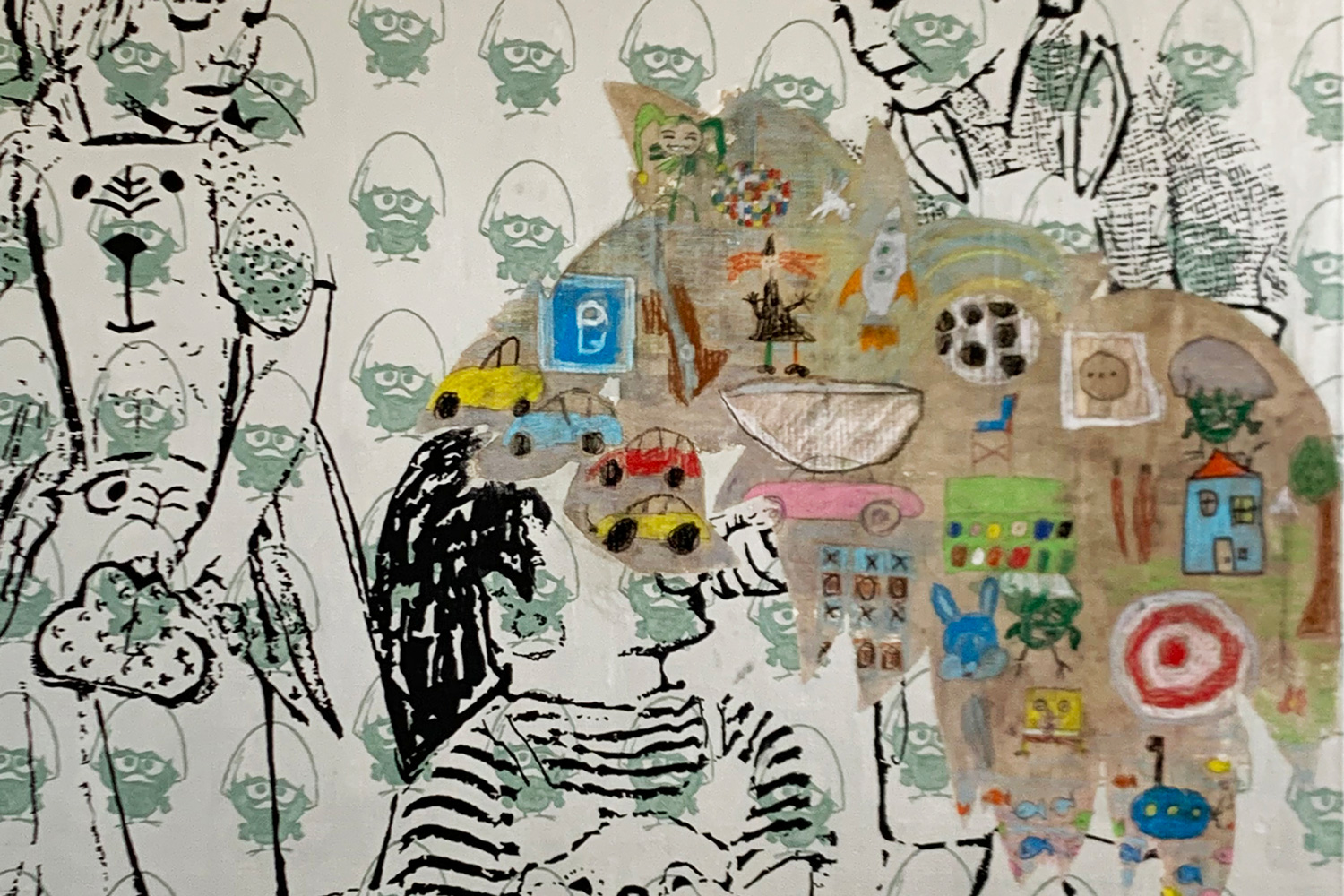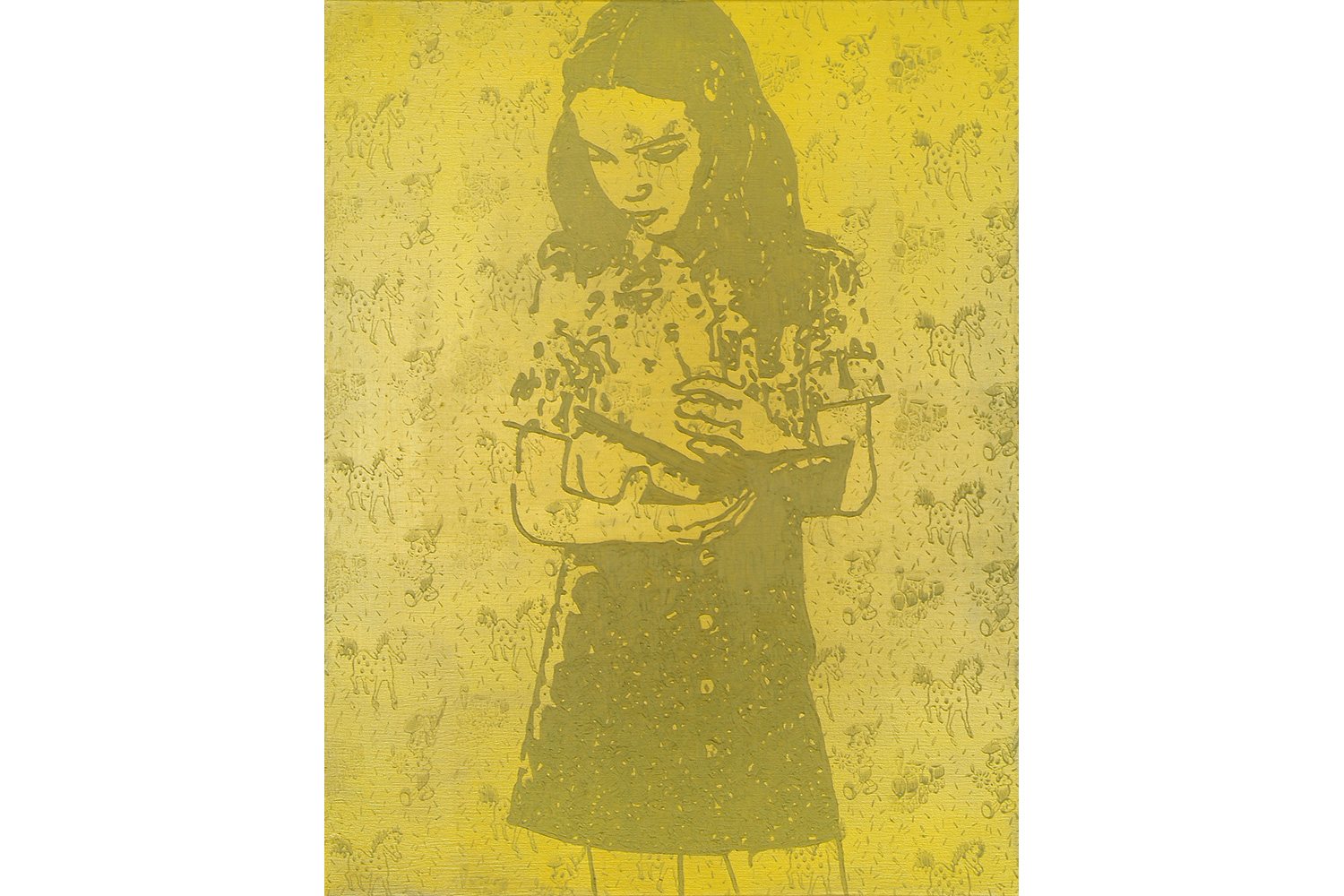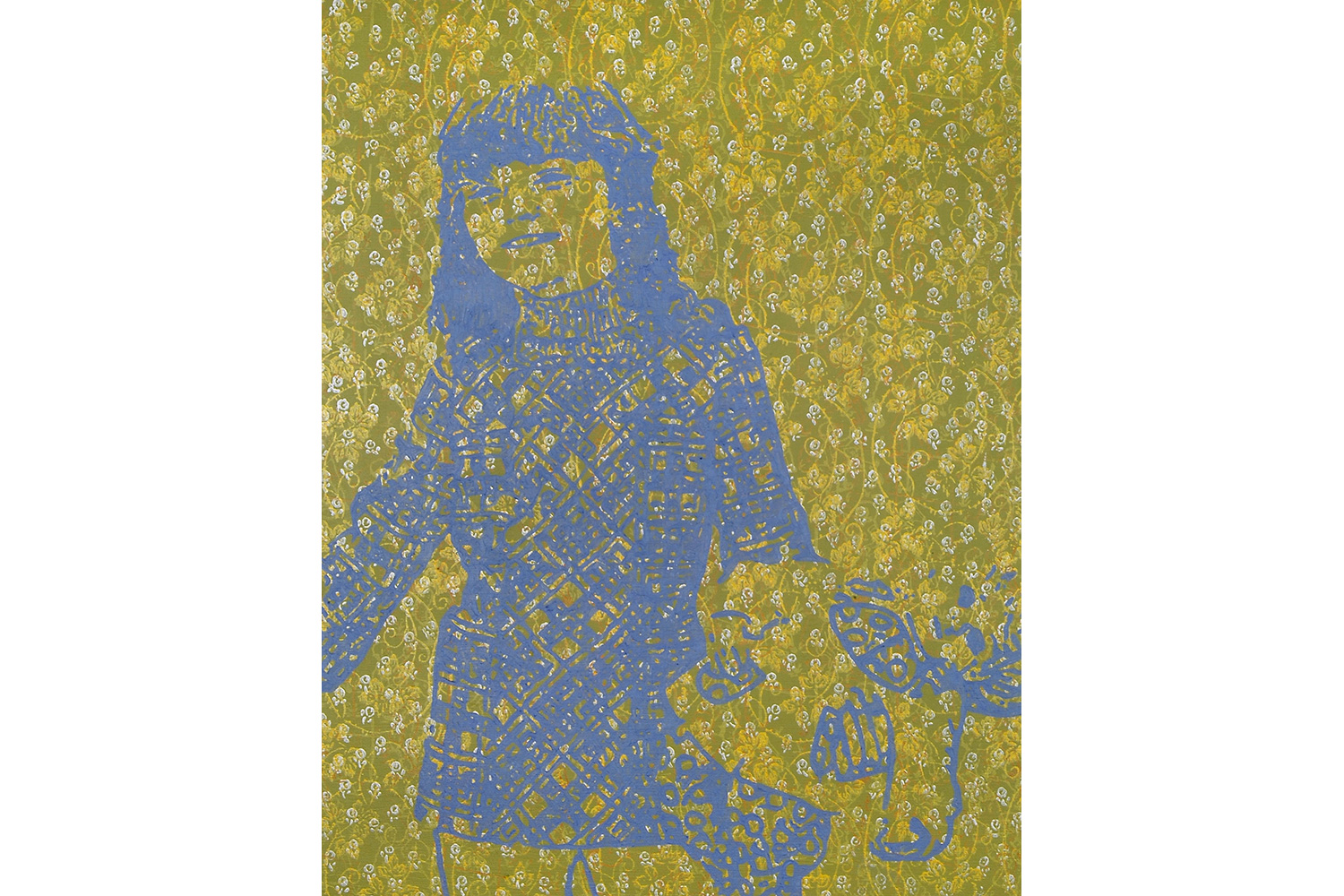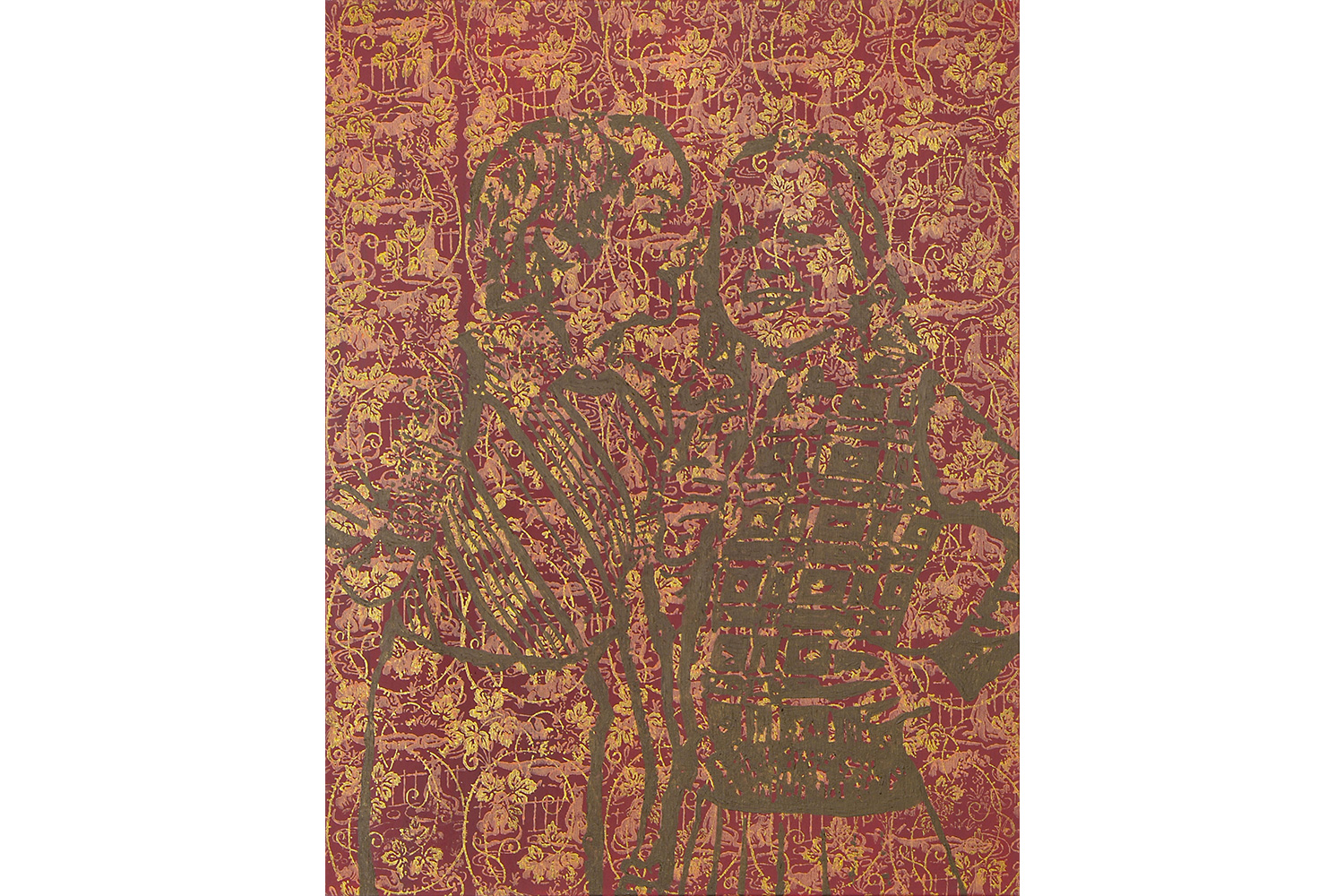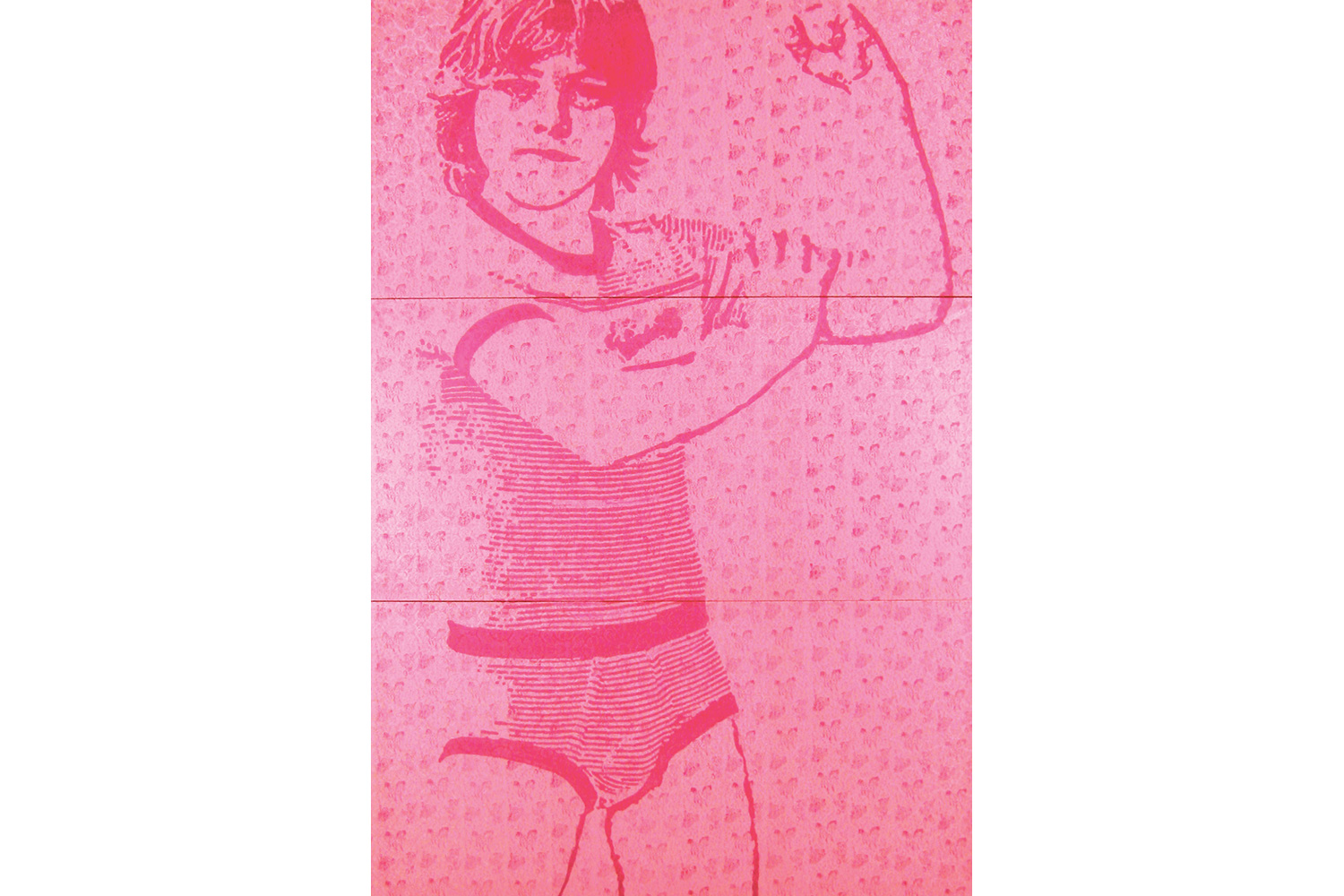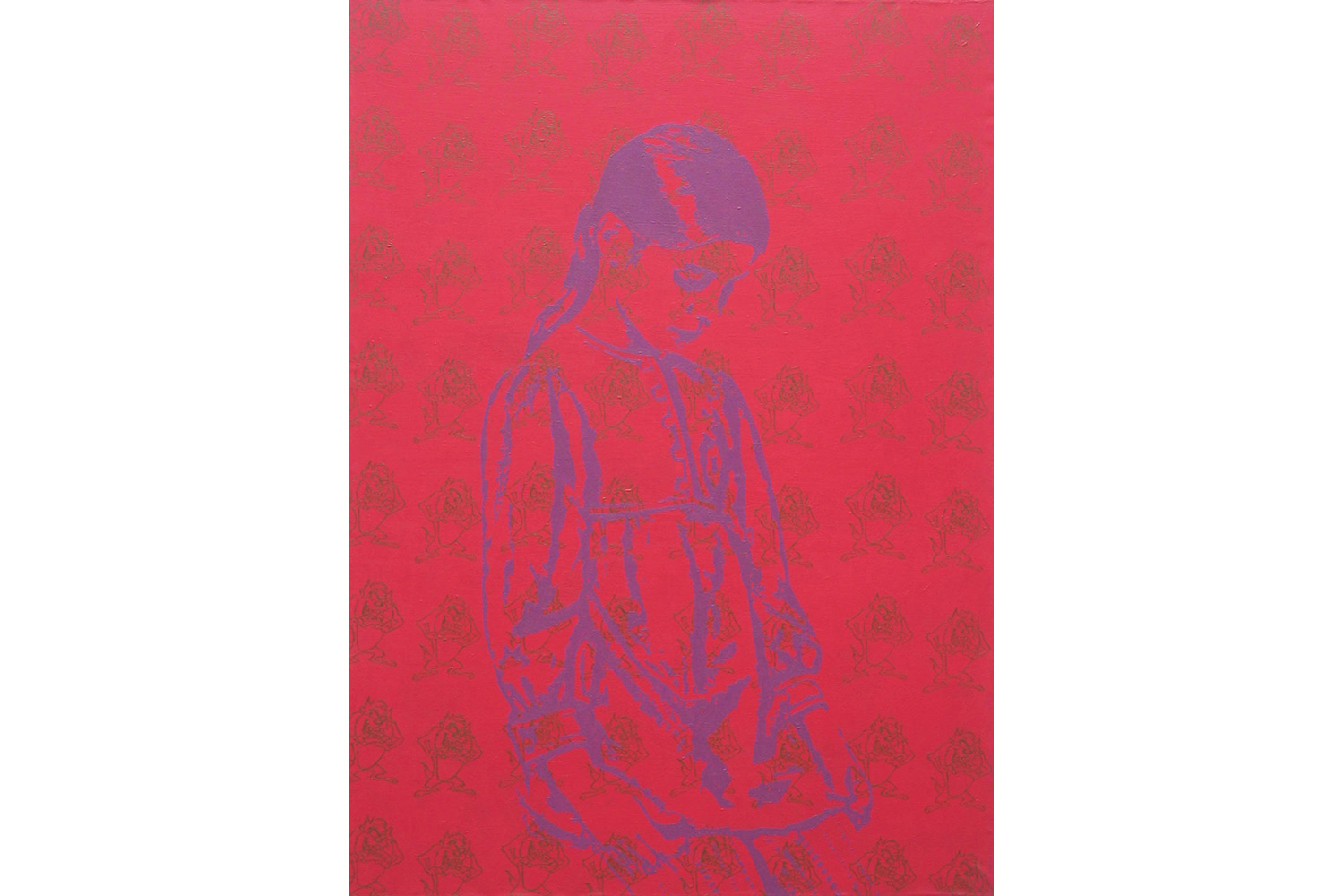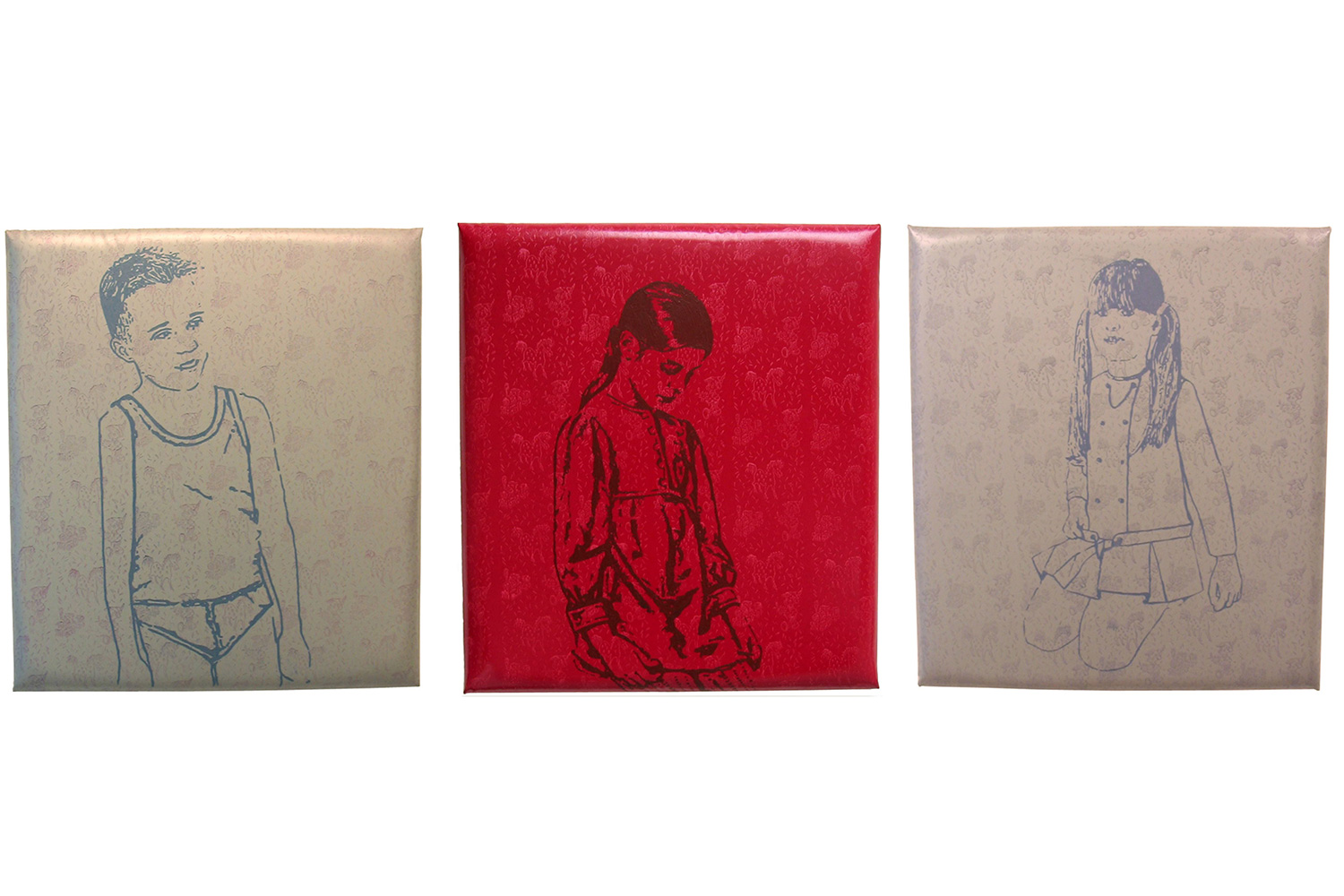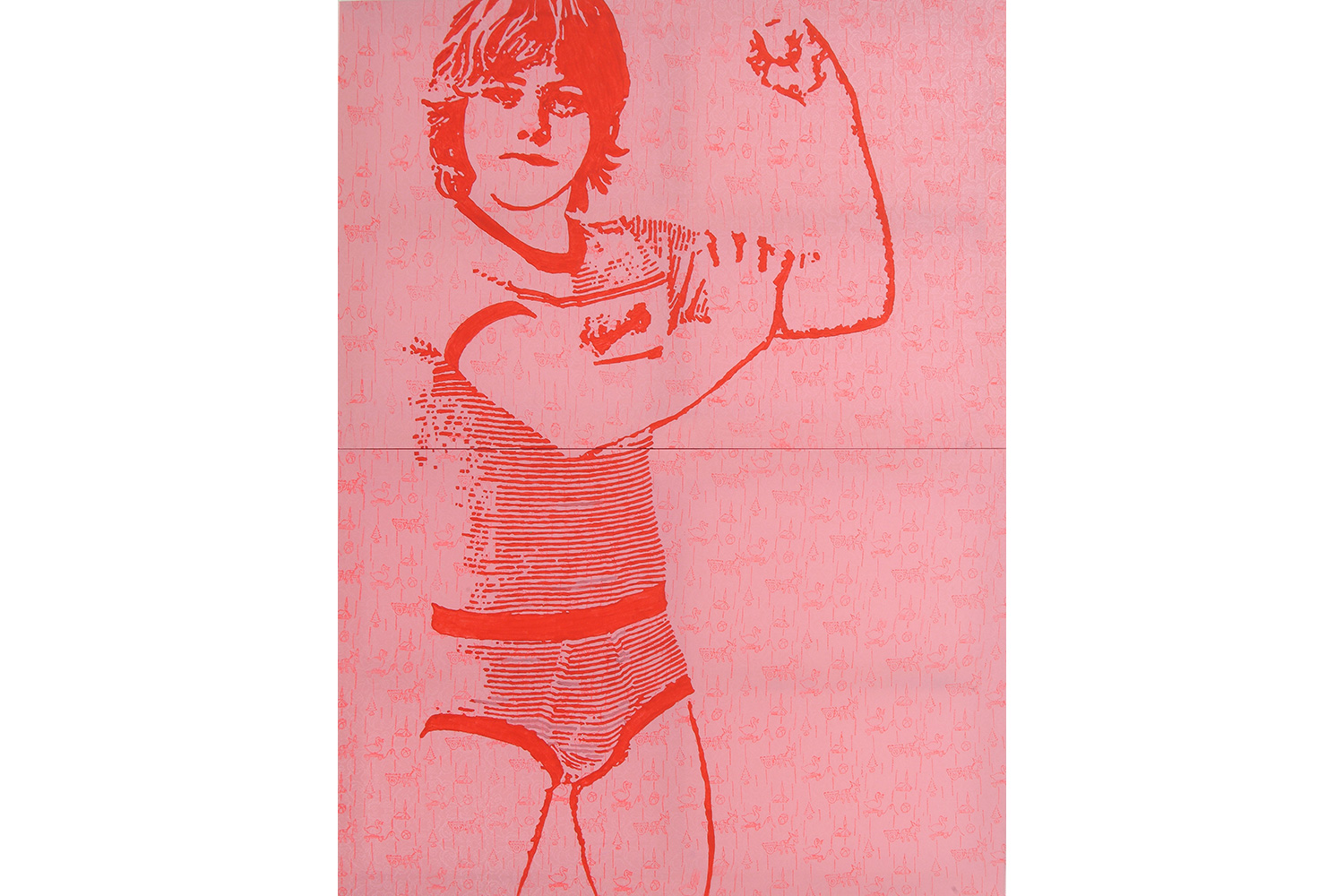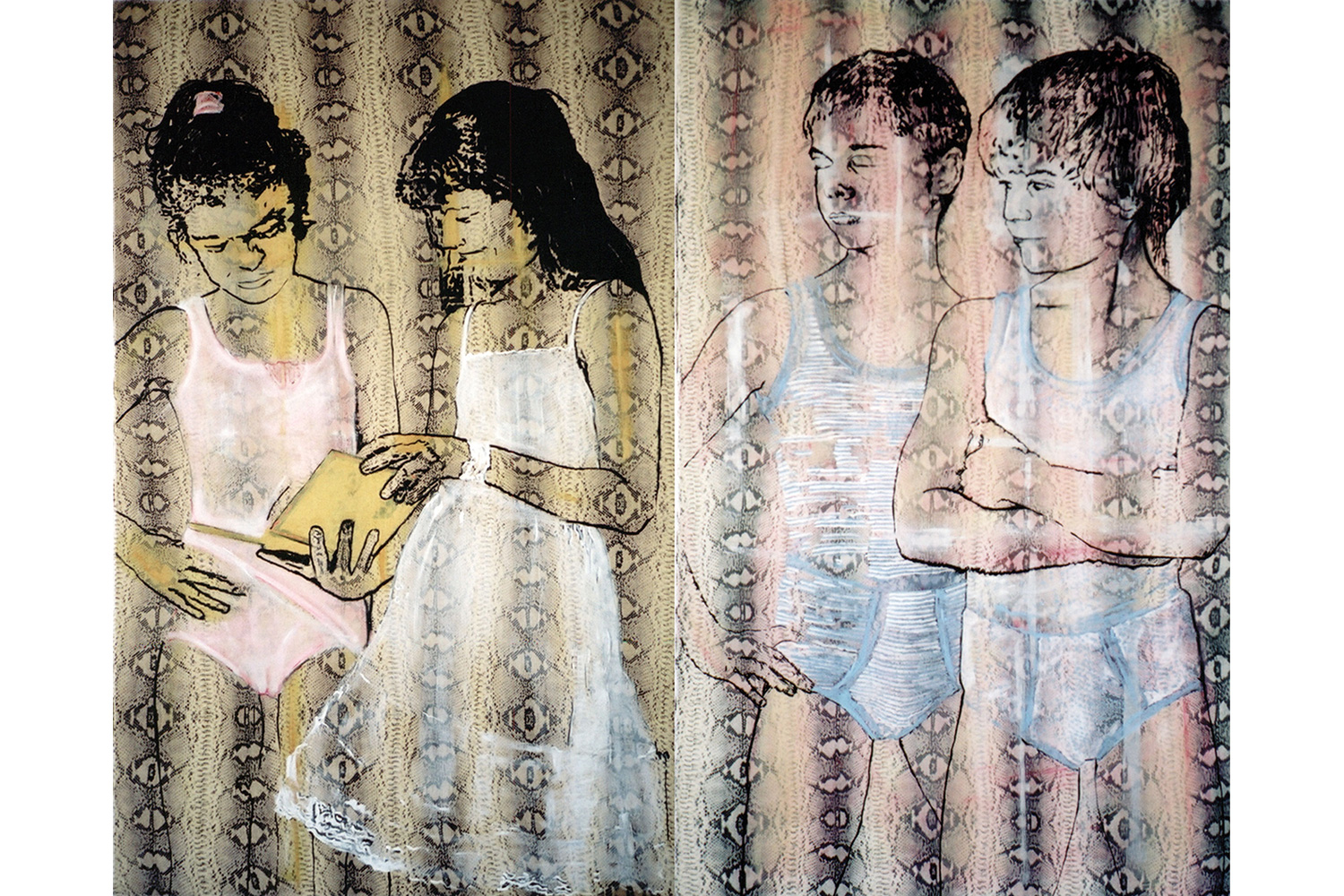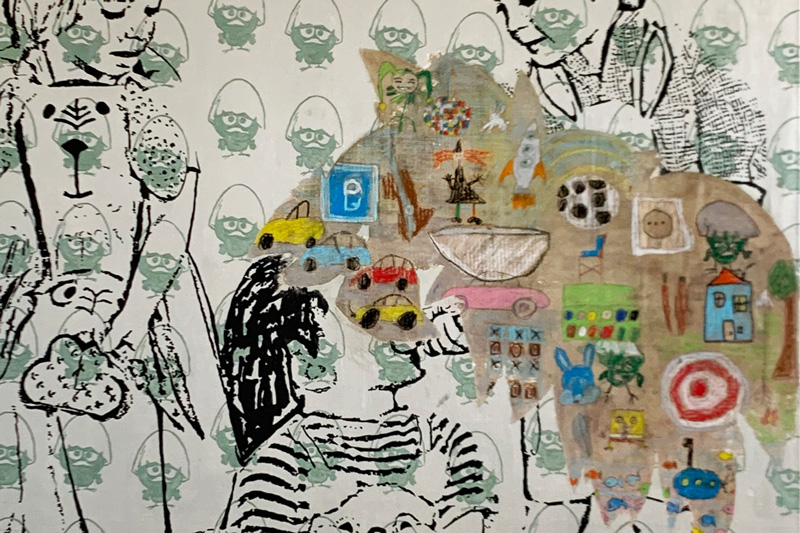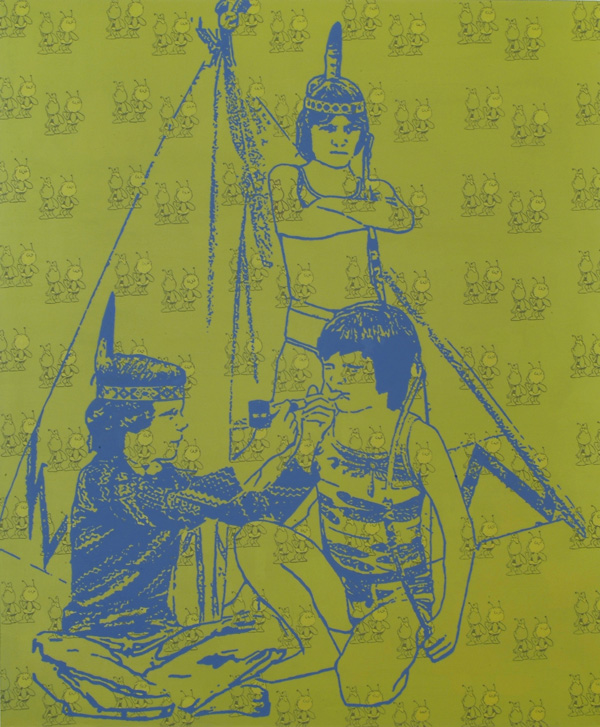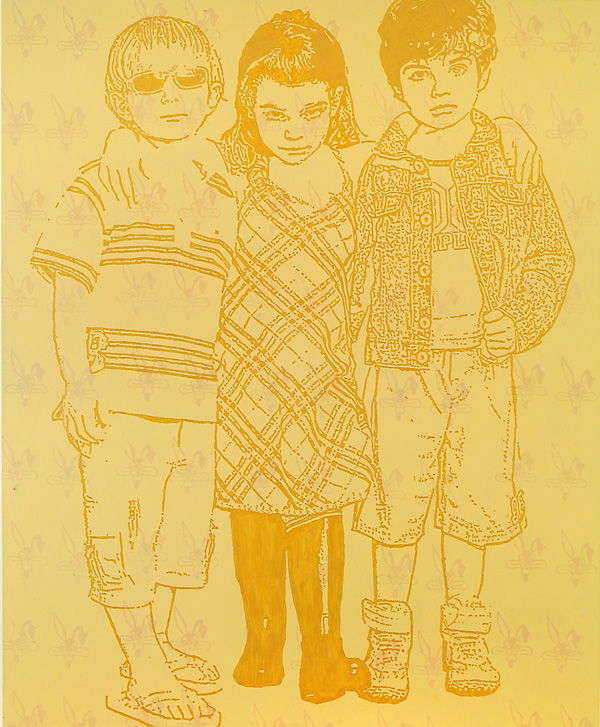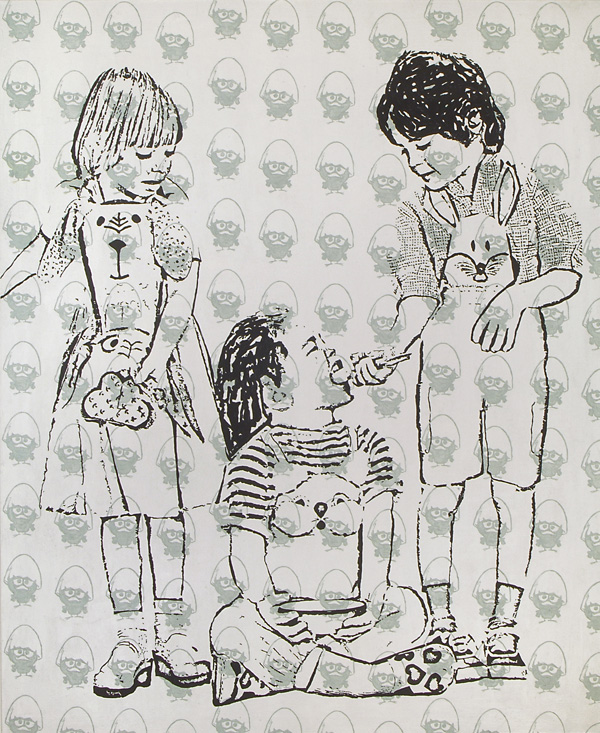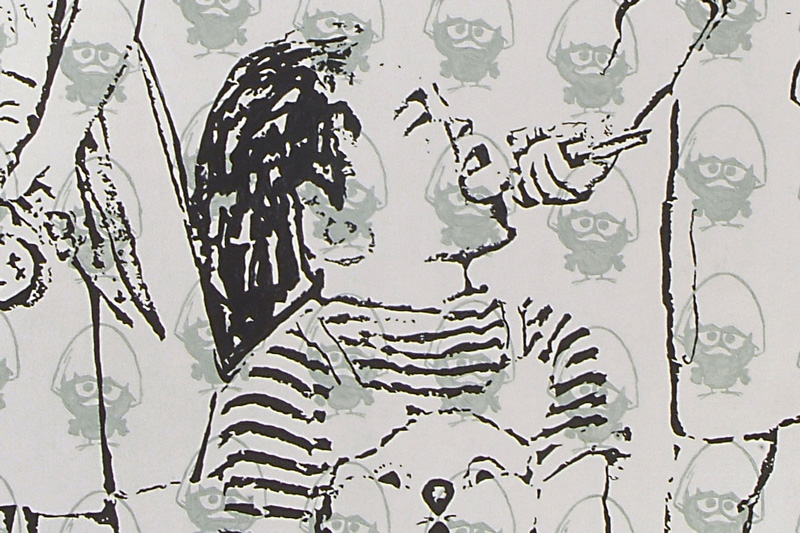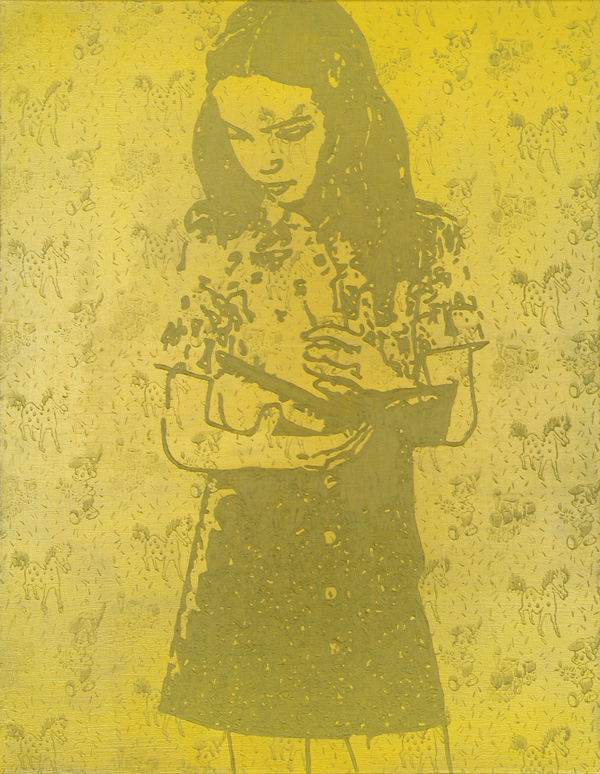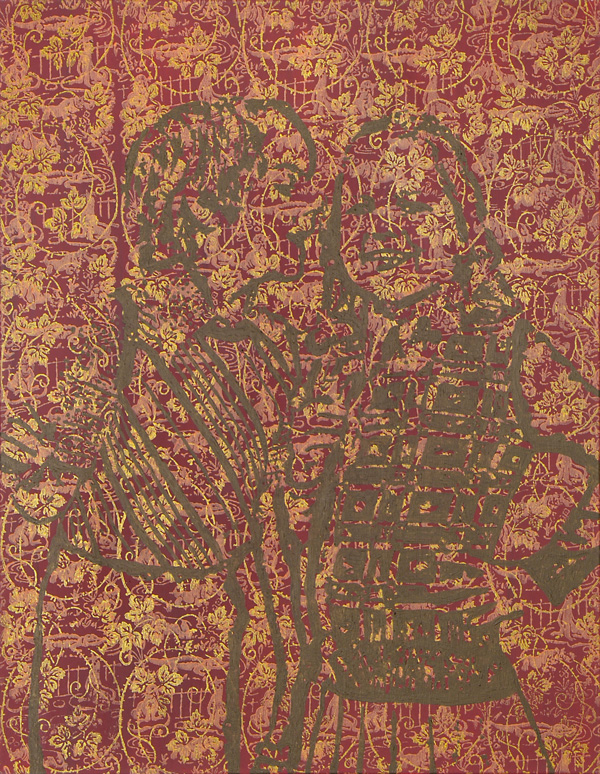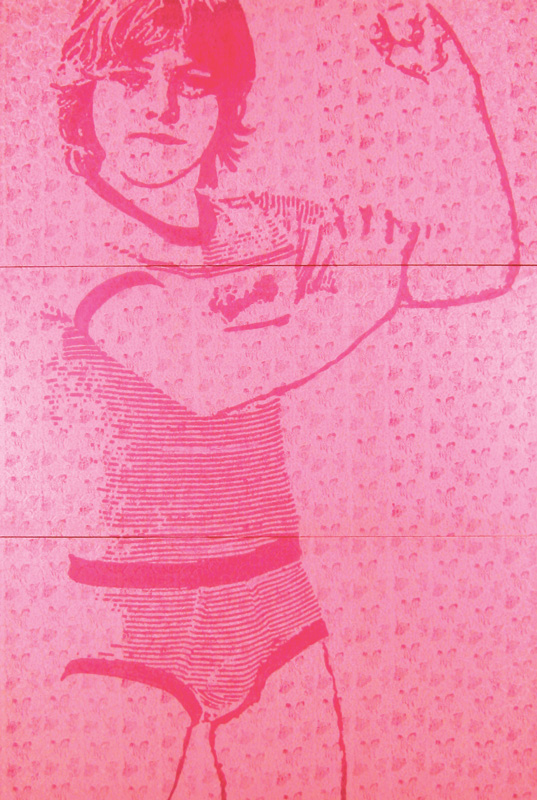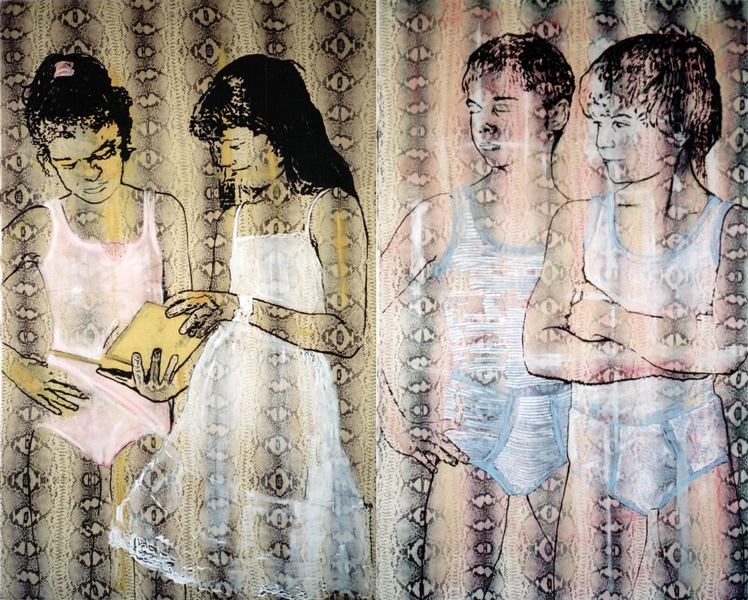The Future Belongs To Us (2002 – 2019)
This cycle of artworks has a quite symbolic title The future belongs to us. The sentence itself, taken from the “Cabaret” movie song (originally Tomorrow belongs to me) sung by the (Nazi youth) jugends, transfers its meaning to the question of children’s engagement in a society constructs. The pictorial motifs of children posing for underwear advertisements are taken from 70`s shopping catalogues. Boys and girls, standing in acted “intimate” situations, illuminated from behind (just like saints in orthodox frescoes) and showing innocence and unawareness that they are being used – in a commercial, political, ideological and mental sense.“Strawberry boy”, “Silver boy”, “Golden boy”, “Blue Boy”, “Pink Boy” etc. a paintings from the series “The future Belongs to Us”, show a boy standing in a pose that suggests the social ideal of masculinity – his arm is bent to show muscles, strength and readiness for aggression. Dressed only in underwear, provocative and tempting, the boy has the task to “emit” the ideal of desirability, and to justify the value of a commercial product. The fact is that the child, depicted in its full naivety, helplessness and denudation, has been used in commercial purposes. The boy is simulating, acting out his violence that has actually been forced on him through education by adults who accept that ideal as a collective construct. Projection of social ideals and values, disputable if assessed from a distance, forms a new generation of people by depositing unachieved ambitions – my offspring must achieve everything I couldn’t do.
Manipulation of sexuality that has been channeled towards the creation of the sexes from the early childhood is just a tool for restoring and multiplying the social ideal itself. Highlighted as against the discrete ornaments of childhood – the pattern of Pinocchio, the character that teaches sincerity and kindness, the boy points out outgrowth of common human values and the priority of more brutal, and for social positioning more important values.
Economizing with children for the purpose of affirmation has been exaggerated during the last 10 years in these parts and grotesquely ubiquitous in everyday life, and it has been particularly transparent in media that “educate” its mass public.
[/vc_column_text]
Bite a Carrot Bunny! feat. Michael, 7 year-old boy (2004-2019)
acrylic, oil pastels, on canvas, 220 x 180 cm
Bite a Carrot, Bunny! (2004)
acrylic on canvas, 220 x 180 cm. This work was reenacted in the new painting in 2019
installation
2002-2006
paintings, drawings
This cycle of artworks has a quite symbolic title The future belongs to us. The sentence itself, taken from the “Cabaret” movie song (originally Tomorrow belongs to me) sung by the (Nazi youth) jugends, transfers its meaning to the question of children’s engagement in a society constructs. The pictorial motifs of children posing for underwear advertisements are taken from 70`s shopping catalogues. Boys and girls, standing in acted “intimate” situations, illuminated from behind (just like saints in orthodox frescoes) and showing innocence and unawareness that they are being used – in a commercial, political, ideological and mental sense.
“Strawberry boy”, “Silver boy”, “Golden boy”, “Blue Boy”, “Pink Boy” etc. a paintings from the series “The future Belongs to Us”, show a boy standing in a pose that suggests the social ideal of masculinity – his arm is bent to show muscles, strength and readiness for aggression. Dressed only in underwear, provocative and tempting, the boy has the task to “emit” the ideal of desirability, and to justify the value of a commercial product. The fact is that the child, depicted in its full naivety, helplessness and denudation, has been used in commercial purposes. The boy is simulating, acting out his violence that has actually been forced on him through education by adults who accept that ideal as a collective construct. Projection of social ideals and values, disputable if assessed from a distance, forms a new generation of people by depositing unachieved ambitions – my offspring must achieve everything I couldn’t do.
Manipulation of sexuality that has been channeled towards the creation of the sexes from the early childhood is just a tool for restoring and multiplying the social ideal itself. Highlighted as against the discrete ornaments of childhood – the pattern of Pinocchio, the character that teaches sincerity and kindness, the boy points out outgrowth of common human values and the priority of more brutal, and for social positioning more important values.
Economizing with children for the purpose of affirmation has been exaggerated during the last 10 years in these parts and grotesquely ubiquitous in everyday life, and it has been particularly transparent in media that “educate” its mass public.
Bite a Carrot Bunny! feat. Michael, 7 year-old boy (2004-2019)
acrylic, oil pastels, on canvas, 220 x 180 cm
Bite a Carrot, Bunny! (2004)
acrylic on canvas, 220 x 180 cm. This work was reenacted in the new painting in 2019




